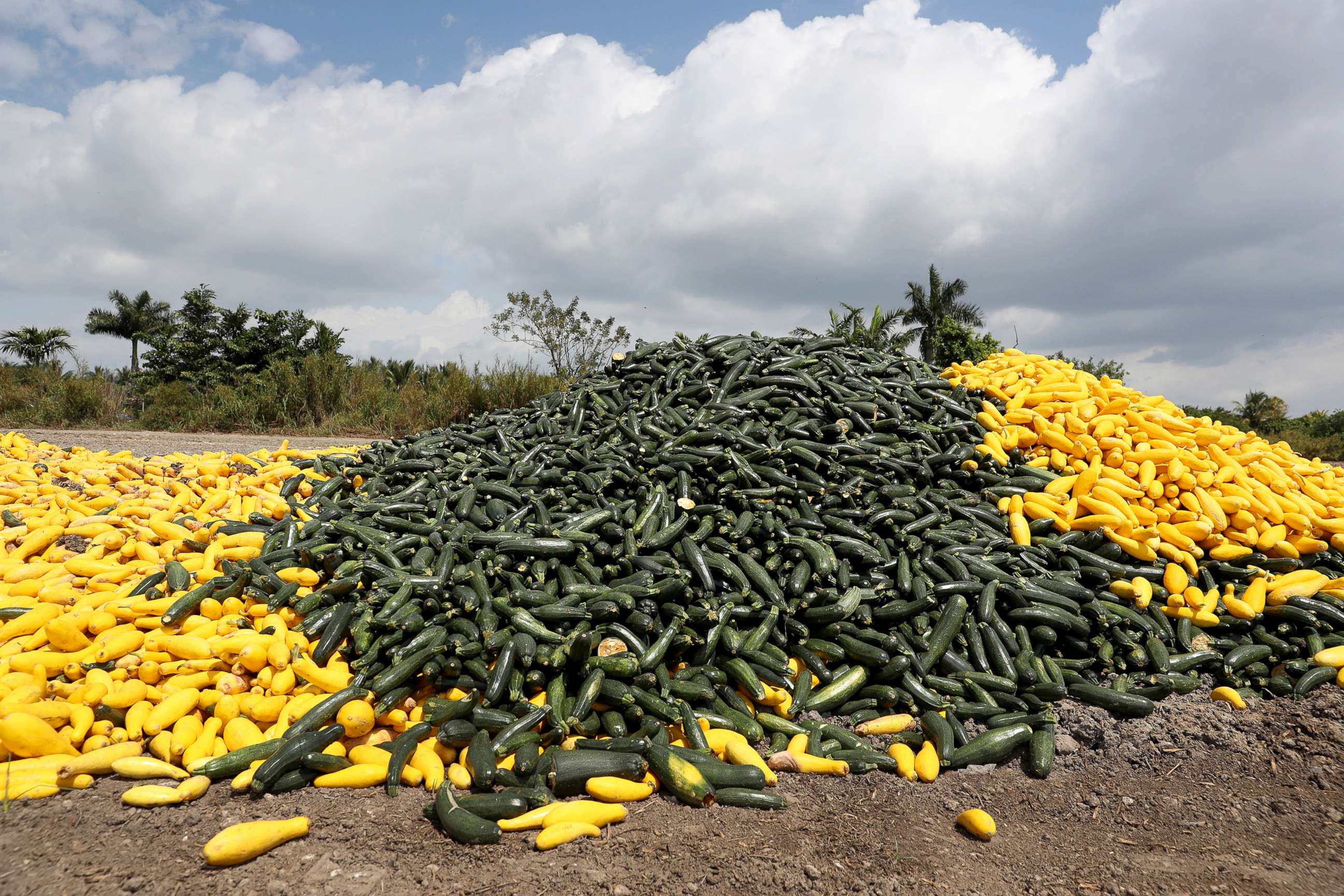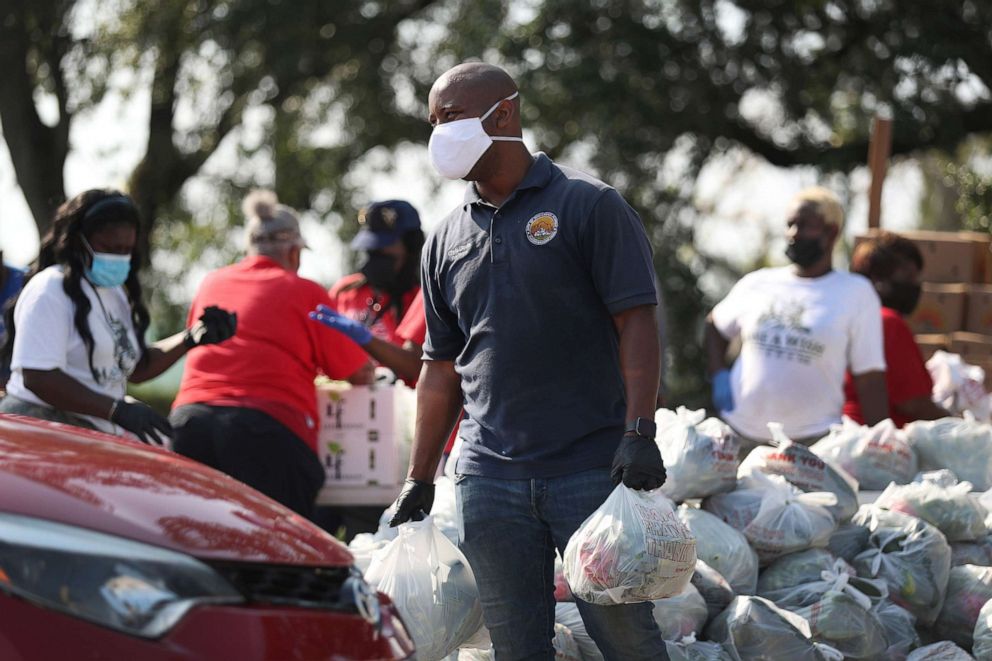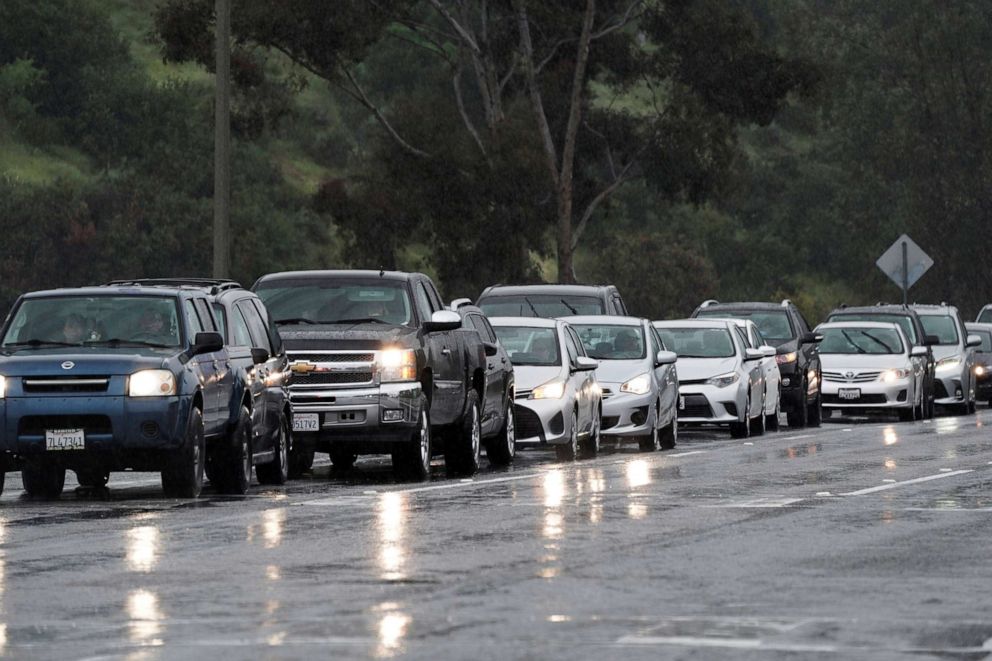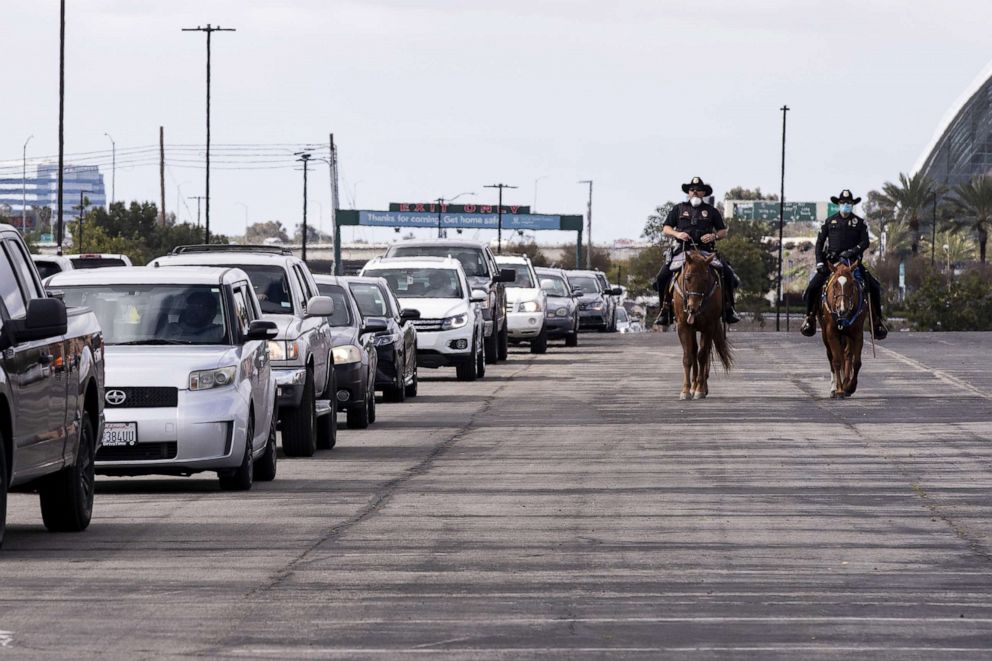Farmers and food banks grapple with broken food supply chain
Both groups want the USDA to help get food from farmers to people in need.
It can be hard to reconcile images of farmers dumping milk and plowing over produce with images of hundreds of cars lined up at food banks or empty grocery store shelves as more Americans find themselves in need of help to get healthy food during the novel coronavirus pandemic.
And so the American Farm Bureau Federation and Feeding America, the largest national organizations that represent farmers and food banks, are asking the U.S. Department of Agriculture to help figure out how to solve that gap in the supply chain.
Farmers and food banks are facing some of the same challenges, huge food consumers, such as restaurants, schools, hotels and other businesses are closed, meaning they aren’t buying all the food they usually do and they aren’t donating the leftovers.

Some of the problems are in the part of the food system average consumers don't normally see. Farmers sell only to big commercial clients are seeing contracts canceled for produce that has already grown or milk that they can't easily repackage for individual sale before it goes bad. Several meatpacking plants that process beef, pork and poultry have also closed to deal with COVID-19 cases among employees, leading to concerns about delays and disruptions.
A Farm Bureau official said that after seeing so many reports of farmers dumping crops and Americans lining up at food banks, the two organizations decided to join forces to work with the USDA to address the problem. They emphasized that partnerships on the ground and work on the local level will be crucial to any response to the crisis but that the USDA could provide a crucial role to remove red tape and distribute food as quickly as possible and get farmers the financial support they need to break even.

Feeding America predicts the country could see a 46% increase in Americans who struggle to get enough healthy food to eat on a daily basis, an additional 17.1 million people. They say they need an additional $1.4 billion in resources to accommodate the 30% increase in their overall operating costs.
In a letter to the USDA the groups specifically mention a possible voucher program that could allow food banks to get food directly from farmers and ranchers while covering some of the cost of harvest and distribution for farmers, but the official said they are open to any policy options.
The $2 trillion relief bill gave the USDA $9.5 billion to buy milk, produce or other products from farmers and redistribute them to food banks around the country, which has been used to aid farmers hurt by the trade war with China or a surplus of milk due to declining demand for dairy products. But officials with Feeding America said that process can involve a lot of red tape and that a response to the current emergency should happen as quickly as possible and using local options.
“This is an opportunity for USDA to act quickly to produce a win for food banks and a win for farmers. It is a chance for government to serve as a facilitator while clearing bureaucracy and red tape. We pledge our willingness to work with you and your staff in quickly implementing such a program in response to urgent, critical needs,” they wrote in the letter signed by Feeding America President Claire Babineaux-Fontenot and Farm Bureau President Zippy Duvall.
Tune into ABC at 1 p.m. ET and ABC News Live at 4 p.m. ET every weekday for special coverage of the novel coronavirus with the full ABC News team, including the latest news, context and analysis.
Lawmakers from the House and Senate Agriculture Committees have also called on the USDA to prioritize local farmers who sell or donate products directly to Americans in need.

Katie Fitzgerald, chief operating officer for Feeding America, said that in addition to increased need, food banks are having to purchase large amounts because they seeing a dip in donations.
“Food banks, like all of us, were not anticipating this intense surge in demand. And at the same time our model, it really relies on donated food out of the supply chain, mostly in retail and manufacturing, and those sources of donations have really diminished greatly over the last four weeks,” she told ABC News.
The USDA is providing food to states through emergency programs and has offered additional flexibilities for states to provide school meals, food stamp benefits and for residents in more states to use their benefits to buy food online.
When asked Monday if the USDA has any plans for a program to redistribute food from farmers to food banks a spokesperson said, “Details on the program will be forthcoming shortly” and directed ABC News to Agriculture Secretary Sonny Perdue’s tweet last week when he said the agency is using all its financial resources to develop a program to provide payments to farmers and try to adapt the supply chain.
A USDA spokesman also said the agency "is maximizing our services and flexibilities to ensure children and others who need food can get it during this coronavirus epidemic. This is a challenging time for many Americans, but it is reassuring to see President Trump and our fellow Americans stepping up to the challenges facing us to make sure kids and those facing hunger are fed.”

But Feeding America also emphasized that the federal government plays an even bigger role in helping Americans get enough healthy food. The Supplemental Nutrition Assistance Program, or food stamps, provides nine meals to every one a food bank distributes. Feeding America said their number one policy priority is to increase SNAP benefits by 15% to provide more lasting help for Americans who need help to access healthy food. In the meantime, they are working to help states apply for all the flexibilities available to them to make food available through government programs.
“This is a problem that our food bank system -- however strong and capable it is -- is not able to solve on its own, it requires a massive government solution, through the various federal nutrition programs, TFAP, other than child nutrition programs, and it has to include a SNAP solution,” Fitzgerald said, adding that food banks can be one of the most accessible places for Americans to learn how to access those programs.
What to know about coronavirus:
- How it started and how to protect yourself: coronavirus explained
- What to do if you have symptoms: coronavirus symptoms
- Tracking the spread in the US and Worldwide: coronavirus map




